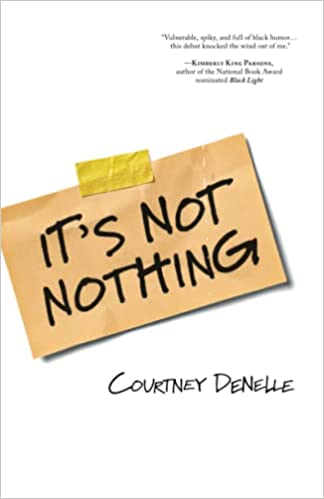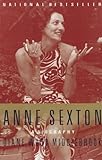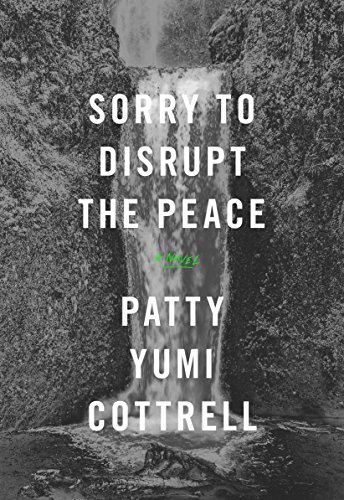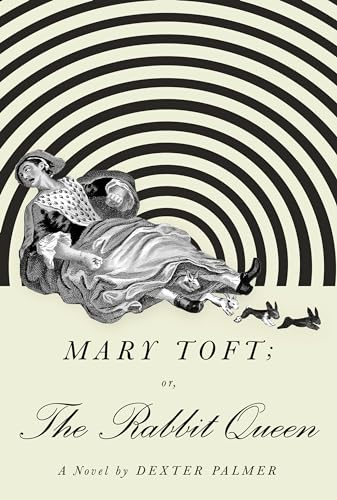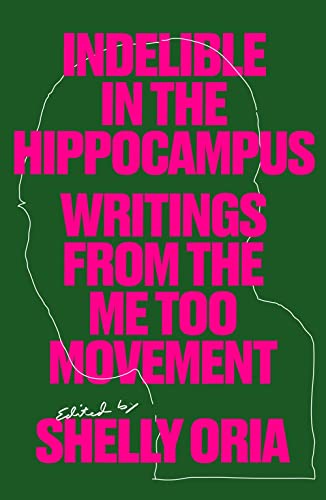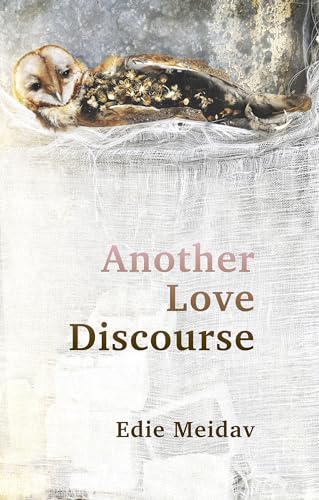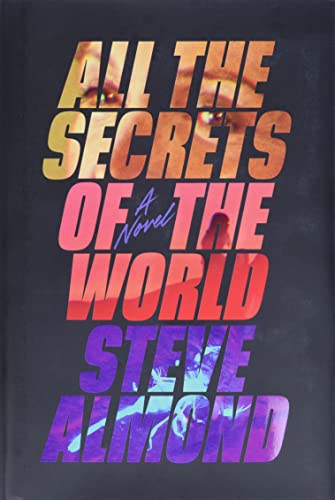Courtney Denelle’s debut novel, It’s Not Nothing, forthcoming from Santa Fe Writers Project on September 1, is based on the author’s own struggles with mental health and addiction. The novel follows an adrift woman, Rosemary Candwell, as she tries to claw her way out of a mental breakdown that results in homelessness. In telling Rosemary’s story, Denelle creates her own niche in the genre of women’s psychological fiction. Written in elegant, poetic bursts, It’s Not Nothing reflects the psychic battle of its subject’s illness. Denelle helps pave the way for mental-health fiction writers who crave a written structure that speaks to the reality of their experience. I met with Denelle via Zoom to discuss It’s Not Nothing, writing women’s pain, and misogyny in the field of mental health.
Liv Albright: I’m really interested in how you portray men in It’s Not Nothing. There’s a passage where Rosemary, the protagonist, reflects on how the men in the psych ward take up so much space, but women aren’t allowed to do that. Can you describe how male entitlement manifests in mental health settings?
Courtney Denelle: Rosemary realizes that contrary to the men in the psych ward, her pain has never been validated or seen as respectable; her symptoms don’t compel sympathy. Women are encouraged to make themselves smaller, to make themselves more manageable in order to move through the world. If there are aspects of gender socialization in children that cast a long shadow, of course there would be gendered expressions in certain symptoms of mental illness. It’s my experience that women are aggressively condemned for being mentally ill in public, versus men who sometimes can get a pass, especially in creative communities.
LA: I also think certain diagnoses, like borderline personality disorder, may be used to shame women for their emotions. This theme shows up in other ways too, such as with Freud and other contemporary male psychologists who are misogynists.
CD: I was focusing on a particular outpatient program that I was in that implemented DBT practices, that have their merit for sure, but the irony to me is that, for the most, part it’s only available to women. It’s just funny that it’s a classroom structure that is designed to teach women how to sit with discomfort, how to bear pain. That’s kind of our lot in life—bearing pain and moderating the narratives around that pain. The way DBT is processed by others that are in a position of power in mental health communities is problematic.
LA: In your book, you talk about how Anne Sexton died from “terminal misogyny.” Her doctors were fascinated by her, and they didn’t treat her. They kept her where she was.
CD: If you haven’t read it, Anne Sexton: A Biography by Diane Middlebrook is considered canon. Of course, it was another era, but they taped her sessions, which are reported on in the book. You could see as a fly on the wall that it was less about moving into an integrated whole life, and more about activating certain wounds and the narratives that she had around those wounds. As a reader, that seemed to resonate with my experience as someone who lives with mental illness. But it does romanticize the tortured artist. I think an artist who is living a whole and integrated life is more likely to make art in a sustainable capacity.
LA: Did you write a lot when you were ill?
CD: I was engaging with the page. I always have, but it was not deliberate work, it was not work that I would ever pass off as being more true or real. It was me just trying to bear the weight of my own reality, and that’s always my relationship with the blank page. So much of my healing has come not only from my relationship with the blank page, but also my experience in meditation and in trauma-informed therapy, and that relies on witnessing the quality of my mind, which is a whole mess of conflicting narratives. Really cultivating my own still point enables me to honor those narratives, those parts of myself that I still live with, but don’t necessarily listen to. Writing this was very much cutting along the nerve. I’m a Rhode Islander, so I always think of water analogies, ocean analogies, and to swim out of riptide, you can’t swim into it—you have to swim alongside it until you feel the rip lessening and you’re able to go back to shore. This novel was really me swimming alongside the riptide until I didn’t feel the charge of it quite so much.
LA: Aside from catharsis, do you also feel like you’re also trying to help with the stigma around mental illness?
CD: I would say that it’s splitting the difference between both. I was only ever a writer because I wrote—I never had anyone outside of myself validating me, saying, “Yes, you’re a writer.” I had to find my own way. I wrote this novel as somebody who doesn’t have a college degree, as somebody who is making outsider art in a literary capacity. I think it was an extra benefit that it might work to destigmatize, or at least make people feel seen, by writing an aspect of real-time resilience. Resilience doesn’t always look the way that we want it to or expect it to, or how other people want it to, in order for your tale of woe to compel sympathy. For Rosemary, there’s no laurel crowning, there’s no overcoming obstacles, but she is somehow learning to live alongside all that’s passed, and that can be heroic. Especially in recovery from substance abuse or alcoholism, you’re never recovered, you’re always in recovery. Writing this was a way of implementing my tools and gaining new tools.
LA: There’s a scene in which Rosemary is feeling self-conscious about her scars, and the guy from the vitamin store is startled when he sees them. Why do you think society is so uncomfortable with those kinds of signs of mental illness?
CD: A mind run amok is scary for the way most people move through the world, as if there’s one person sitting behind our eyes, pulling these little levers. It could just be the idea of loss of control, true loss of control. There is increased fluency in the language of mental illness, but there is also an idea that it should look a certain way. I would say that if it’s heavy for people to observe or perceive, imagine what that’s like living with it.
LA: I think it’s easy to say don’t be scared of somebody who has a mental illness, because even to the person who experiences it, it’s terrifying. It’s also hard for the person observing, because that person can probably tell how bad it is.
CD: I think with suicidality in general—even for deeply empathetic, compassionate people—there’s a natural human fear or aversion to situations that you can’t impact. You can’t fix it, you can’t take it away from somebody, and that’s the same for substance abuse, too. That’s part of the challenge of recovery, supporting somebody who’s going through that.
LA: The character Rosemary has this guard up to protect herself, and she needs that because she’s been through so much.
CD: There are many things that we do that maybe don’t serve us in the long term that keep us safe in the moment. At one point, Rosemary has that internal response to the woman running the coat drive. The woman is outwardly a woman of wealth, who passes judgment on Rosemary, because Rosemary’s not subscribing to what she thinks is applicable to a young woman in her situation. I think that’s where the real test of people’s compassion displays itself, in moments like these, where the privileged can determine who among us is worthy of care and concern. I think there is still that knee-jerk response of wanting to determine who’s really in pain, who really is in need, and that is not helpful.
LA: A lot of people also don’t understand what is behind someone’s illness. For instance, Rosemary had a difficult relationship with both parents. Rosemary’s mother refuses to see her after Rosemary tries to kill herself, and her father is in his alcohol addiction, while Rosemary is trying to recover from hers.
CD: Rosemary is raised by a woman who hates women. Writing the novel made me investigate my own internalized misogyny. Moreover, alcoholism is often called “the family disease,” not just because it reoccurs intergenerationally, but also how it shapes, warps, and contorts interpersonal relationships. It was important to me to write a character where her drinking problem wasn’t the whole story. In fact, her sobriety was just the first step. It catalyzed the whole new emotional, somatic experience of having landed stark sober in a body, her physical body, for what felt like the first time. She has to learn how to live all over again.
